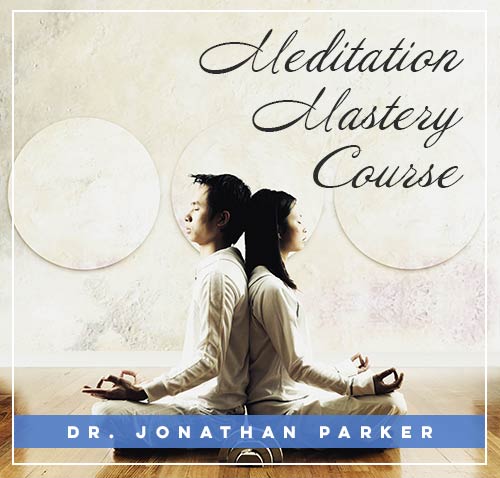Deep Relaxation: Embarking on Yoga Nidra Experience

Hey there, amazing readers! 🖐️ Just a quick note: yes, we know there are a lot of ads here. Trust us, we get it—it’s not the prettiest look, but they help us keep this blog alive and kicking. Those pesky little ads cover the costs of all the behind-the-scenes magic, from hosting and tech stuff to creating content we hope you’ll love.
We’re committed to delivering quality posts, and your support (even just sticking around despite the ads) means everything to us. So, bear with us, and thanks for helping us keep the good vibes rolling. Now, on to the fun stuff! 😉
TRANSLATE BUTTON AT THE END OF THE ARTICLE
A Quick Overview
In today’s fast-paced world, finding time to relax and unwind can be a challenge.
However, deep relaxation techniques such as Yoga Nidra offer a way to calm the mind, reduce stress, and promote overall well-being.
Yoga Nidra, also known as yogic sleep, is a form of meditation that guides practitioners into a state of deep relaxation while remaining conscious.
This practice has gained popularity for its ability to provide a profound sense of peace and rejuvenation in just a short amount of time.
What is Yoga Nidra?
Yoga Nidra is a powerful meditation technique that allows the body and mind to deeply relax while maintaining awareness.
During a Yoga Nidra session, practitioners are guided through a series of relaxation exercises that help release tension from the body and calm the mind.
The practice often involves lying down in a comfortable position, closing the eyes, and following the instructions of a trained instructor.
Despite its name, Yoga Nidra is not actually a form of physical yoga but rather a form of guided meditation.
History of Yoga Nidra
Yoga Nidra has its roots in ancient Indian spiritual practices, particularly in the teachings of tantra and yoga.
The practice is believed to have been developed thousands of years ago as a way to achieve deep states of relaxation and meditation.
In the early 20th century, the modern form of Yoga Nidra was popularized by Swami Satyananda Saraswati, who founded the Bihar School of Yoga in India.
Since then, Yoga Nidra has been widely practiced around the world and has gained recognition for its numerous benefits.
Benefits of Deep Relaxation
The benefits of deep relaxation through Yoga Nidra are numerous and extend beyond just physical relaxation.
Some of the key benefits include:
Stress Reduction: Yoga Nidra helps to reduce stress and anxiety by calming the nervous system.
Improved Sleep: Practicing Yoga Nidra can promote better sleep quality and help alleviate insomnia.
Enhanced Focus and Concentration: Regular practice of Yoga Nidra can improve mental clarity and concentration.
Emotional Healing: The practice of Yoga Nidra can help release emotional blockages and promote emotional well-being.
Increased Self-Awareness: By practicing Yoga Nidra, individuals can develop a deeper understanding of themselves and their inner workings.
How Does Yoga Nidra Work?
Yoga Nidra works by guiding practitioners into a state of deep relaxation while maintaining awareness.
The practice typically involves a series of verbal instructions that focus on different parts of the body, breath awareness, visualization, and body scanning.
By following these instructions, practitioners are able to let go of physical and mental tension, allowing for a state of profound relaxation.
The practice of Yoga Nidra also involves setting specific intentions or sankalpas to help individuals align their actions with their deepest desires and goals.
Preparing for Yoga Nidra
Before embarking on a Yoga Nidra practice, it is important to create a conducive environment for relaxation.
Some tips for preparing for Yoga Nidra include:
Find a Quiet Space: Choose a quiet and peaceful space where you won’t be interrupted during your practice.
Get Comfortable: Lie down on your back in a comfortable position with a pillow under your head and a blanket to keep you warm.
Set an Intention: Before starting your practice, set a positive intention or sankalpa for your session.
Follow a Routine: Establish a regular practice routine to reap the full benefits of Yoga Nidra.
Steps to Practice Yoga Nidra
The following are the steps involved in practicing Yoga Nidra:
Lie Down: Find a comfortable position on your back and close your eyes.
Body Scan: Bring awareness to each part of your body, starting from the toes and moving up to the head.
Breath Awareness: Focus on your breath, observing the natural rhythm without trying to control it.
Visualization: Visualize a calming scene or image that brings you peace and relaxation.
Set an Intention: Repeat your sankalpa or positive intention silently to yourself.
Gradual Awakening: Slowly bring your awareness back to the present moment, wiggling your fingers and toes before opening your eyes.
Common Misconceptions
There are some common misconceptions about Yoga Nidra that are important to address:
Sleeping: While Yoga Nidra is often described as yogic sleep, the goal is to remain conscious and aware throughout the practice.
Religious Affiliation: Yoga Nidra is a secular practice and does not require any specific religious beliefs.
Difficult Practice: Yoga Nidra is accessible to people of all ages and fitness levels, and no prior experience is required.
Difference from Meditation
While Yoga Nidra shares similarities with meditation, there are key differences between the two practices.
Meditation typically involves focusing the mind on a single point of concentration, such as the breath or a mantra, to cultivate mindfulness and awareness.
In contrast, Yoga Nidra guides practitioners into a state of deep relaxation while remaining conscious, allowing for restorative rest and rejuvenation.
Research and Studies
Numerous studies have explored the benefits of Yoga Nidra on physical and mental health.
Research has shown that regular practice of Yoga Nidra can help reduce symptoms of anxiety, depression, and PTSD, as well as improve sleep quality and overall well-being.
The practice has also been linked to reduced stress levels and increased feelings of relaxation and calmness.
Finding a Yoga Nidra Teacher
When looking for a Yoga Nidra teacher, it is important to find someone who is experienced and knowledgeable in the practice.
Consider the following factors when choosing a teacher:
Training: Look for a teacher who has received proper training and certification in Yoga Nidra.
Experience: Consider the teacher’s experience and background in guiding Yoga Nidra sessions.
Personal Connection: Choose a teacher with whom you feel comfortable and connected.
Incorporating into Daily Routine
To incorporate Yoga Nidra into your daily routine, consider the following tips:
Schedule Regular Practice: Set aside a specific time each day for your Yoga Nidra practice.
Start Slow: Begin with short sessions and gradually increase the duration as you become more comfortable.
Consistency: Make practicing Yoga Nidra a regular part of your daily routine to experience the full benefits.
Experiment: Explore different styles of Yoga Nidra and find what works best for you.
Conclusion
Yoga Nidra is a powerful practice that offers deep relaxation, stress reduction, and numerous health benefits.
By incorporating Yoga Nidra into your daily routine, you can experience improved sleep, enhanced focus, and emotional healing.
Whether you are new to meditation or a seasoned practitioner, Yoga Nidra provides a unique opportunity to relax the body and calm the mind.
With its long history and proven benefits, Yoga Nidra continues to be a popular and effective relaxation technique for people of all ages and backgrounds.

The Enlightenment Journey is a remarkable collection of writings authored by a distinguished group of experts in the fields of spirituality, new age, and esoteric knowledge.
This anthology features a diverse assembly of well-experienced authors who bring their profound insights and credible perspectives to the forefront.
Each contributor possesses a wealth of knowledge and wisdom, making them authorities in their respective domains.
Together, they offer readers a transformative journey into the realms of spiritual growth, self-discovery, and esoteric enlightenment.
The Enlightenment Journey is a testament to the collective expertise of these luminaries, providing readers with a rich tapestry of ideas and information to illuminate their spiritual path.
Our Diverse Expertise 🌟
While our primary focus is on spirituality and esotericism, we are equally passionate about exploring a wide range of other topics and niches 🌍📚. Our experienced team is dedicated to delivering high-quality, informative content across various subjects ✨.
To ensure we provide the most accurate and valuable insights, we collaborate with trusted experts in their respective domains 🧑🏫👩🏫. This allows us to offer well-rounded perspectives and knowledge to our readers.
Our blog originally focused on spirituality and metaphysics, but we’ve since expanded to cover a wide range of niches. Don’t worry—we continue to publish a lot of articles on spirituality! Frequently visit our blog to explore our diverse content and stay tuned for more insightful reads.




















